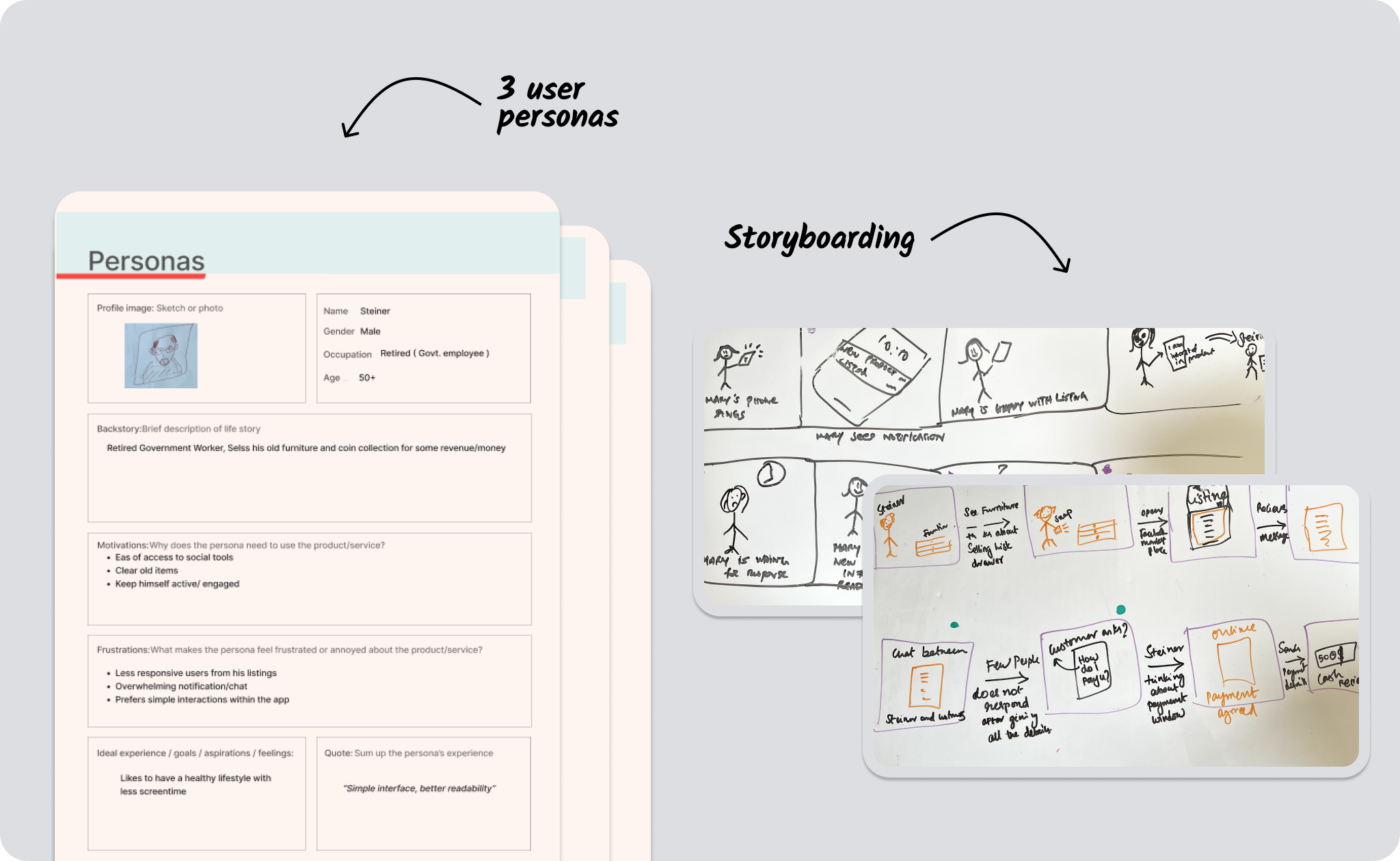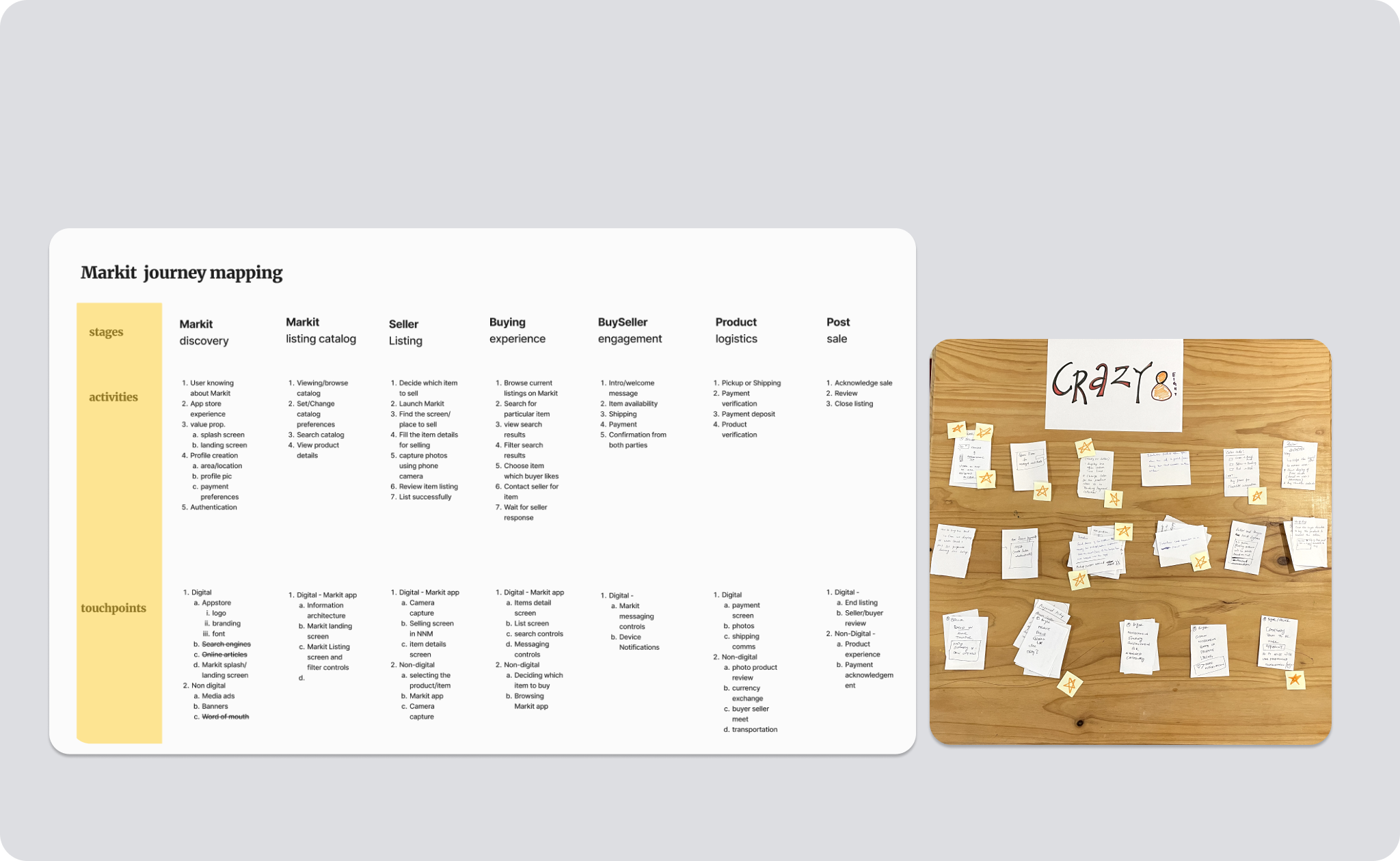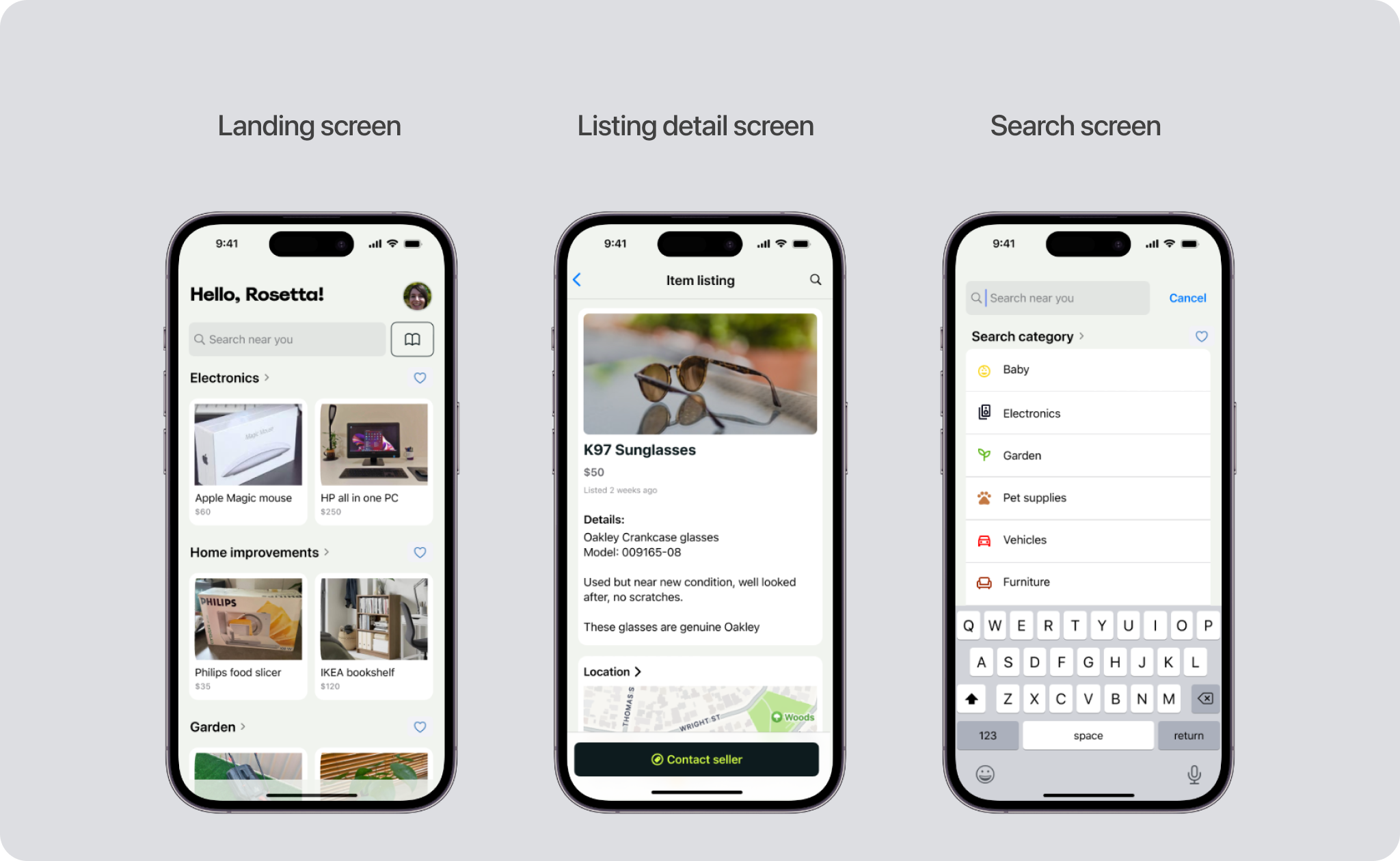Markit platform
Markit is an unsolicited design project that creates a platform to buy and sell locally. There are several platforms like eBay, FB Marketplace, Opendoor and Gumtree. I started to research this space by surveying users of these platforms by using design thinking to solve some of the problems by designing an app.

Problem framing
I used several qualitative and quantitative methods to conduct the research. After spending some time on desk research to frame the hypothesis around improving the current garage sale app experiences. I formulated a survey as an evaluative research method, to gather insights. Synthesizing the responses helped me to understand what the users' pain points are and discover new possibilities. I also created user personas and a storyboard to further progress the research.
- Who : The users of Markit are going to be either a buyer or a seller
- What : To buy and sell products locally
- When : When the seller decided to do a garage sale
- Why : To promote reusability, spring cleaning and earn money

Problem statement:
Markit aims to solve the problem of finding buyers or sellers for items that people no longer need or want. It will also provide a convenient way to find items that people are looking for at a lower price than retail.
Ideation
With the help of my some of my friends, I set up an ideation panel to generate some ideas. To help facilitate the session, I set about mapping the user journey. Later, II introduced the participants to the research and helped emphasise the user problems, the personas and storyboarding helped makes this process easier. We ran a Crazy 8 session as a fast-paced sketching exercise that allowed us to generate many ideas in a short amount of time.

Prototyping
With the ideas from Crazy8 and the potential of several new ideas to tackle the current problem set, we set about prototyping the solution. I also found this to be non-linear since it allowed me to frame the HMW while starting to prototype the screens. I sketched out several iterations of wireframes and mockups, to design a functional workflow. This also saved a lot of time to test some of the new ideas and make improvements before designing high-fidelity screens.
Final design & outcome

The outcomes of design thinking to this problem area helped me to create an app that is more user-centred and that better meets the needs of its customers. I also learnt to design mobile apps for Android and iOS, which gave me a different perspective as a designer. Mobile apps are constantly evolving as the devices and platforms change, and the user needs to evolve with your product or business. It should be simple, scalable, and involve frequent user testing and analytics to identify improvements over time. Providing your users with a beautiful app that helps them complete tasks quickly while on the go will earn brand loyalty and keep your app front and centre in their minds.